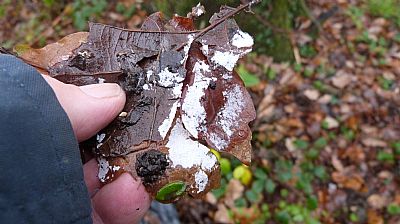MOULDS
COMPARISON OF MOULDS AND SLIME MOULDS
Moulds and slime moulds are different growths, but we have put them on the same page for ease and clarity.
Such subjects are certainly connected, but there are differences.
- KINGDOM CLASSIFICATION - Moulds are classified under the kingdom Fungi, while Slime Moulds are belong to the kingdom Protista
- STRUCTURE - moulds are primarily multicellular organisms with a cell wall made of chitin, whereas slime moulds can exist as single-celled amoebas or aggregate to form multicellular structures called plasmodia
- FEEDING AND MOVEMENT - moulds obtaine nutrients by absorbing organic matter, while slime moulds feed by engulfing bacteria and other microorganisms
- REPRODUCTION =Moulds reproduce through spores, while slime moulds can reproduce both sexually and asexualy, often through spore formation
- HABITAT -Moulds are typically found in various habitats, while slime moulds are often found in moist environments, such as decaying wood and leat matter.
SLIME MOULDS : Brefeldia maxima
Wiki tells us that it is a species of non-parasitic plasmodial slime mould, and a member of the class Myxomycetes. It is commonly known as the tapioca slime mold because of its peculiar pure white tapioca pudding-like appearance. A common species with a worldwide distribution, particularly in North America and Europe. It is often found on bark after heavy rain or excessive watering. Their spores are produced on or in aerial sponangia and are spread by wind and some beetle species.

Slime mould on a rotting stick within the woods of the Vale of Leven Industrial Estate November.

And on nearby leaves.
WIKIPEDIA : https://en.wikipedia.org/wiki/Brefeldia_maxima

